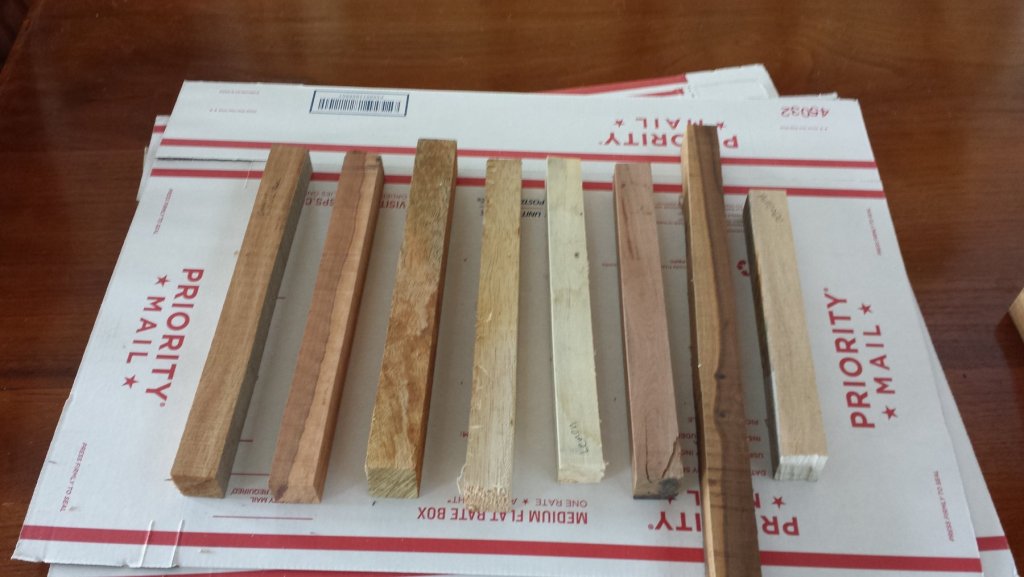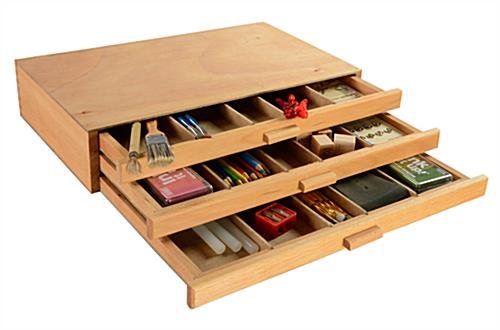-
Posts
1,058 -
Joined
-
Last visited
Content Type
Profiles
Forums
Gallery
Events
Everything posted by grsjax
-
Do a search for copper leaf or copper shim stock. I believe K&S has foil/shim stock from .001 to .005 thickness. Neither leaf, foil or shim stock has a clear coat and it isn't expensive. If you go with any of these be sure and get the thicker stuff as it is easier to use for model work. However the really thin leaf is to delicate for most models although for putting a copper bottom on a really small scale model it is perfect.
-

Thinning water based paint
grsjax replied to grsjax's topic in Painting, finishing and weathering products and techniques
I find it less hassle to use the alcohol. No lamps or heat guns required. Just mix and paint. -

Thinning water based paint
grsjax replied to grsjax's topic in Painting, finishing and weathering products and techniques
Where we live in Hawaii the humidity tends to be high so water based paints dry more slowly than they would in a dryer place. Rubbing alcohol works well for me under these circumstances but may not be a good solution for everyone. Probably varies depending on the brand of paint as well. -
Check a jewelry supply website or on eBay. 7, 9, 21 and 49 (7x7 strand, best for rigging) strand cable is used for stringing beads. Looks just like wire rope but in very small sizes. Here is a link to an eBay seller. There are many more.
-

Sharpening with MK !! Narrow Blade Honing Guide
grsjax replied to ChrisLBren's topic in Modeling tools and Workshop Equipment
Assuming that your intended use is doing fine shaping and smoothing with the chisels than 30-35 degrees is appropriate. If you want to use them to hog out a lot of wood than a a larger angle might be better. The finer the edge the better control for fine work. For work requiring more force you want the edge to be supported by more metal behind it. -
Great find. I checked Amazon and they have it for $14.95 with free shipping for Prime members. Also there are a couple of similar engraving pens with higher ratings and a bit lower price.
-
Are there any vendors in the US that sell the AER wooden ship models?
-

What brand of #11 blades do you use
grsjax replied to bigcreekdad's topic in Modeling tools and Workshop Equipment
Excel. Better than xacto in my experience. -

Billings 50ft. HMS Renown Steam Pinnace - Need some help
grsjax replied to grsjax's topic in Wood ship model kits
I will get some pics of the gun parts asap. Good photo. Has a lot of detail I haven't seen before. -
I have a Billings Boats kit of the HMS Renown's 50ft Steam Pinnace kit #604. Looks like a pretty good kit with better than average instructions for a Billings kit. Problem is the assembly instructions for the 3pr gun mounted in bows of the boat. The problem is there doesn't seem to be any. A few poor quality pictures of the gun and the picture on the box is about all the info there is. Some of the assembly is obvious but it would be nice if there were actual instructions or at least a diagram of how the parts fit together. I don't know if there is something missing from the kit instructions or I am just overlooking something. Any help would be greatly appreciated.
-
Hawaii is one of those places where almost any kind of tree will grow. Unfortunately apple, pear, walnut and boxwood are not among the trees that thrive here. Below is a picture of some of the common wood found in this area. There are many more species but this is what I had on hand to photograph so I will start there and possibly in the future add others. From left to right they are causarina, tropical almond, mango, albiza, lemon, ohia, milo and avocado. Causarina, also known as Australian pine, she oak, iron wood and river oak is a tree native to Australia. Introduced in Hawaii as a wind break tree. The wood is hard with a moderate grain and red coloring varied from a very light red brown sap wood to a dark red heart wood. To coarse for exterior use on a model that is going to be finished bright but and excellent wood for framing that will remain hidden. Tends to crack during drying and bleed dark read sap when first cut. Doesn't seem to be a good wood for bending. Tropical Almond is a tree native to the south Pacific and may be native to Hawaii but there is some that think it was introduced after European contact. Popular shade tree in seaside parks. Similar to a tree native to Hawaii called Kamani or Hawaiian oak. Hard wood with a light brown sap wood and darker brown heart wood. Nice grain and works easily. Fairly hard with a moderate grain. To coarse for exterior use unless painted but other wise a good wood to work with. Very good for display base and/or cabinet. Mango. Common in tropical areas. Beautiful grain but way to coarse for model building. The dust and sap can cause irritation and rash. Albiza. Native to India and is the fastest growing tree in the world. Considered a trash tree in Hawaii but has nice wood with some interesting properties. Very light, heavier than balsa but lighter than basswood. Very strong for it weight but has a coarse, stringy texture. Works easily and holds fastenings fairly well. Does not bend well. Makes a great wood for fillers and backing pieces and can be used for a solid hull that will be planked over. Lemon. This piece is from a Meyer lemon tree my neighbor cut down. Unfortunately is laid on the ground in the rain for several days before I found out about it. Hard, tight grained wood that saws, carves and turns well. Very susceptible to insect attack and staining if not seasoned and stored correctly. Very good all around modeling wood. Ohia is the most common native tree in Hawaii and is found no where else. Scientific names is polymorphus because it can grown in a large variety of forms from a low spreading bush to a giant a hundred feet tall and 3 feet thick at the base depending on the conditions. Hard, dense and close grained wood. Will crack if not sealed as soon as it is cut and seasoned correctly. Has been used for outrigger canoes, flooring, furniture, musical instruments, turning and carving. Color varies from medium brown to a very dark, reddish brown. In general an excellent wood for modeling especially for dark parts finished bright. Milo is another tree native to Hawaii and found on other south Pacific islands. Beautiful wood for carving. Moderately hard with a close grain. Light brown sap wood and dark brown heart wood. Some really old trees have heart wood that is very nearly black. Common in coastal areas where there is a source of fresh water. Tends to have a very convoluted, multi-trunk structure so finding long, straight pieces is unusual. An excellent wood for model building. Avocado. Common tree in warm climates including southern California and Florida. Wood is a light brown with a grain that varies from tight and straight to wavy with flecks. Good wood for general purpose use in model building but the grain can be a problem.
-

Friskit Low Tack Masking Film
grsjax replied to grsjax's topic in Painting, finishing and weathering products and techniques
I was using water based paints. So far no problems with wicking on basswood. I use the blunt end of an exacto knife handle to press it down well before applying the paint. -
My wife the artist introduced me to this stuff. I tried it out on a piece of raw basswood sheet and it produced very good results. Easy to apply and cut. Left a sharp edge after painting and removal. Anyone have experience with this item and is there anything to watch out for when using it? https://www.amazon.com/dp/B004QVBQBG/ref=twister_B01DTEDTEW?_encoding=UTF8&psc=1
-
This is way out of date but if you still need info here is a link to a build log on a Dutch site that has pictures of the parts sheets. https://www.modelbrouwers.nl/phpBB3/viewtopic.php?t=25936
- 6 replies
-
- Missing parts
- cutting list
-
(and 1 more)
Tagged with:
-

What oil to use for Proxxon TBM220 drill press
grsjax replied to vaddoc's topic in Modeling tools and Workshop Equipment
Motor oil may be to thick for your machine. A lighter machine oil would be better. A lot of different places should carry what you need. The same type of oil is used to lubricate fishing reels, sewing machines, small motors and other light equipment. Not sure if it is still available or sold in the UK if it is but the old standby household oil called 3 in 1 oil would be a good choice. If nothing all else fails ask at a hardware store for light machine oil. -
Ran across a series of small boat models from a manufacture that must not be named. What I would like to know is who is the legit manufacture of these kits? There are 4 or 5 ranging from a small jolly boat up to a barge and they come in scales from 1/96 to 1/35. I thought they might be copies of Master Korabel or Falkonet kits but comparing pictures of the kits I came to the conclusion that they weren't. Anyone know who makes the legit versions of these kits? I would like to find out and maybe build a couple of them.
-
If you have some way to cut the log into to boards it will speed up drying. Remove the bark, cut the slabs 1 or 2 inches thick and seal the ends with a thick coat of paint or wax (anchor seal works very well). Stack the boards with short pieces of wood between them to let the air circulate around the wood freely. If you cannot get the log sawn this way it will also work to quarter it or simply split it in two. Anything you do to increase the surface area will help speed up the drying.
-
Having two projects going at the same time can be a good way to prevent getting frustrated. When one gets to the point where you need a break you can work on the other for awhile. I agree about the work boats.
-
HI Igor Thank you for the kind words. I didn't start a build log on my ship in a bottle build because I wasn't to sure how well I was going to do with it. I will post some pics in the completed models gallery when it is finished. Nothing nearly so well done as yours, just a simple sloop about 1:300 scale.
- 185 replies
-
- jolie brise
- pilot cutter
-
(and 2 more)
Tagged with:
-
I was looking on line for some ideas for a small tool box with several flat drawers for storing small tools like knives and pliers. Ran across this neat item from an art supply company called Display2Go. I have no association with this company or anyone in it, just passing along a good idea. 15.75x9.75 inches outside dimensions. Price is around $12 + shipping. I was thinking of getting one or two to keep my most used tools in on my workbench.
-
Amazing work. I am just now finishing up my first ship in a bottle and seeing Igor's work makes me realize what a long way I have to go. Beautiful.
- 185 replies
-
- jolie brise
- pilot cutter
-
(and 2 more)
Tagged with:
-
I will be following this closely as I have this same kit in my stash.
- 131 replies
-
- finished
- artesania latina
-
(and 1 more)
Tagged with:
About us
Modelshipworld - Advancing Ship Modeling through Research
SSL Secured
Your security is important for us so this Website is SSL-Secured
NRG Mailing Address
Nautical Research Guild
237 South Lincoln Street
Westmont IL, 60559-1917
Model Ship World ® and the MSW logo are Registered Trademarks, and belong to the Nautical Research Guild (United States Patent and Trademark Office: No. 6,929,264 & No. 6,929,274, registered Dec. 20, 2022)
Helpful Links
About the NRG
If you enjoy building ship models that are historically accurate as well as beautiful, then The Nautical Research Guild (NRG) is just right for you.
The Guild is a non-profit educational organization whose mission is to “Advance Ship Modeling Through Research”. We provide support to our members in their efforts to raise the quality of their model ships.
The Nautical Research Guild has published our world-renowned quarterly magazine, The Nautical Research Journal, since 1955. The pages of the Journal are full of articles by accomplished ship modelers who show you how they create those exquisite details on their models, and by maritime historians who show you the correct details to build. The Journal is available in both print and digital editions. Go to the NRG web site (www.thenrg.org) to download a complimentary digital copy of the Journal. The NRG also publishes plan sets, books and compilations of back issues of the Journal and the former Ships in Scale and Model Ship Builder magazines.




